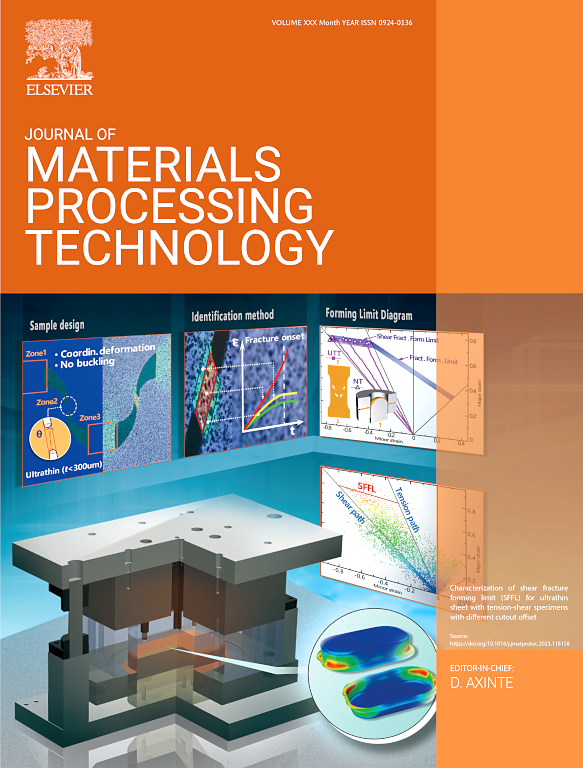A novel end-to-end integrated process paradigm for fatigue life improvement in nickel-based superalloy hole structures
IF 6.7
2区 材料科学
Q1 ENGINEERING, INDUSTRIAL
Journal of Materials Processing Technology
Pub Date : 2025-02-01
DOI:10.1016/j.jmatprotec.2024.118694
引用次数: 0
Abstract
The premature fatigue failure of hole structures poses a critical challenge in aviation components. This study introduces an end-to-end integrated paradigm, utilizing the cold expansion process (CEP) as a technological carrier to simultaneously improve both fatigue life and stability in the IN718 hole structures. Integrated process technology gains better performance than the isolated ones, where IP-CEP achieves a 2.76-fold improvement in fatigue life. This paradigm further advances to a 4.87-fold fatigue life improvement with reduced dispersions by actively integrating drilling, reaming, cold expansion, reaming, and polishing, breaking through the upper limits of CEP-series. The fatigue life improvement mechanisms are elucidated through advanced surface integrity analysis and fatigue fracture characterization. The results show that the cold expansion process induces substantial maximum compressive residual stress (CRS) and gradient plastic deformation layer, while reaming and polishing effectively improve the surface quality of cold expansion holes. Finally, a clear link between surface integrity and high-temperature fatigue life is established. The consistent enhancement in the fatigue life of the hole structure was primarily attributed to the synergistic effects of CRS, the plastic deformation layer, and superior surface quality. This study proposes an active anti-fatigue paradigm with flexible stages, providing a unified framework to balance multiple objectives for high-temperature structural applications.
求助全文
约1分钟内获得全文
求助全文
来源期刊

Journal of Materials Processing Technology
工程技术-材料科学:综合
CiteScore
12.60
自引率
4.80%
发文量
403
审稿时长
29 days
期刊介绍:
The Journal of Materials Processing Technology covers the processing techniques used in manufacturing components from metals and other materials. The journal aims to publish full research papers of original, significant and rigorous work and so to contribute to increased production efficiency and improved component performance.
Areas of interest to the journal include:
• Casting, forming and machining
• Additive processing and joining technologies
• The evolution of material properties under the specific conditions met in manufacturing processes
• Surface engineering when it relates specifically to a manufacturing process
• Design and behavior of equipment and tools.
 求助内容:
求助内容: 应助结果提醒方式:
应助结果提醒方式:


